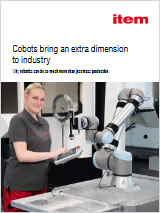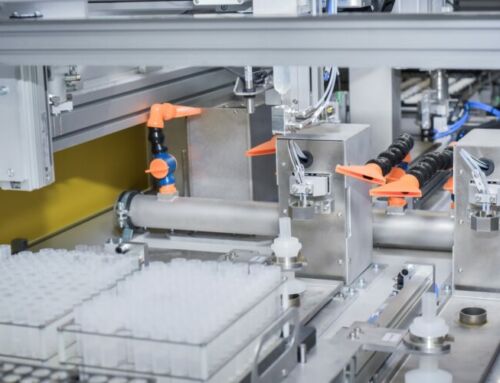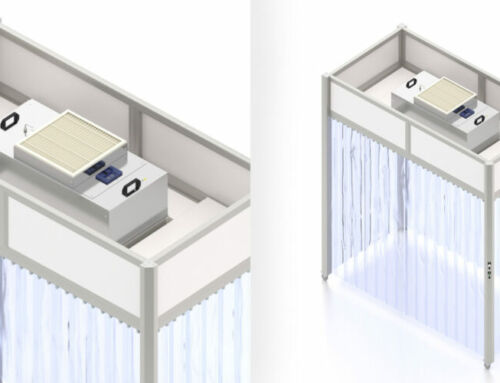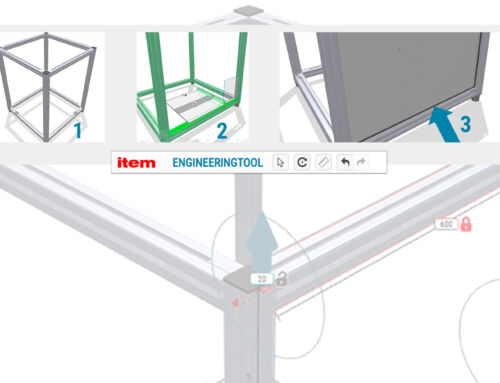When it comes to robotic projects, it’s not just the technical aspects that are important – there are also laws and standards to be followed.
Machinery Directive 2006/42/EC plays a crucial role in safeguarding health and safety. However, when robot applications are in play, it’s not enough to just stick to this one Directive. In addition to that, there are various DIN standards and possibly even internal company regulations to be followed. This is because anyone who builds a machine is responsible for its safety. This goes hand in hand with the obligation to carry out a comprehensive risk assessment for the machine – or, in this case, the robot application – and develop suitable safety concepts. The purpose of this is to identify in advance any hazards and potential health risks that might occur during operation, so they can be avoided or at least reduced as effectively as possible using appropriate safety measures. After a general introduction to robot safety, this blog post focuses on performing risk assessments on robot solutions and developing the subsequent safety concept. This will help shed some light on fundamental aspects of safe robot applications.
An Overview of Robotic Applications
Read our whitepaper to discover specific applications and other advantages of robotics in industry – and explore why lightweight robotics are a particularly worthwhile investment for small- and medium-sized enterprises.
The Machinery Directive and that crucial question – “completed or partly completed machine?”
In Machinery Directive 2006/42/EC, the safety of the user and the product is of the utmost importance. In Germany, this Directive has been applied in national law as the “Ninth Ordinance on the Product Safety Act (Machine Ordinance)”. Depending on the project in question, other European Directives could also apply – for instance, the EMC Directive for electrical devices. This is why it is important to clarify, at the very beginning of the safety assessment, which directive a machine falls under and which standards must therefore be followed. When carrying out a risk assessment on a machine, different standards need to be taken into account depending on the type of machine involved. Not only that, but there are also the internal regulations we mentioned earlier.
When it comes to robotics applications, you have to determine whether you’re dealing with a complete or partly completed machine. But how do you differentiate between these two categories? Here is a helpful example: A fully functional robotic arm, for instance, is a partly completed machine. However, when it is fulfilling a specific purpose, its status changes – it becomes a complete machine. This is the case with a robot for loading a CNC milling machine, for example. In fact, machine loading is one of the typical applications for cobots, along with screwing, welding, assembly and sorting. Depending on the category (complete or partly completed machine), there are further obligations to consider, such as meeting various health and safety requirements, submitting additional evidence of machine safety and producing technical documents. In addition to the Machinery Directive, ISO 10218-1 and ISO 10218-2 also contain important information on how to safely design and integrate robotics applications.
Robot safety standards and risk assessments
The risk assessment is an integral element of the safety concept for a robot application. It is used to identify hazards, estimate and evaluate risks, and define safety measures before construction even begins. The risk assessment is also a crucial element of technical documentation. The EN ISO 12100 standard contains basic information on how to carry out this kind of risk assessment. It includes general design guidelines, important definitions and explanations of technical terms. Risk assessments are carried out in several steps. First, the application limits and usage limits of the machine (i.e. the robot) are defined. The hazards are then identified and the risks estimated. These three aspects make up what is known as the risk analysis. This is then followed by the risk evaluation. In addition, suitable safety measures must be taken and, if necessary, plans for risk minimization must be made. The risk matrix of DIN EN ISO 13849 is a valuable resource when it comes to classifying hazards and specifying necessary safety equipment.
Using a safety concept to reduce the risks of a robot solution
One fundamental requirement is that the automated process must be visible to employees at all times. This aspect must be taken into account when designing any robot solution. From the outset, it is crucial to identify not just the obvious accident or injury risks associated with a robotics application, but all kinds of hazard. These include ergonomic risks, but also mechanical hazards, for example, from sharp-edged or pointed workpieces. Electrical hazards must be taken into consideration, too, as must hazards resulting from harmful dusts and gases. Once the possible risks have been analysed, the actual dangers need to be evaluated. This means evaluating the likelihood of the potential risk actually occurring and resulting in damage. The extent of the possible damage and the number of employees affected must also be estimated. Key considerations in this estimate include how often and how long employees are in the hazardous area in question.
The manufacturer or supplier of a robot solution is required to reduce any existing risk by putting in place a suitable safety concept. A preventive design solution must first be found for each identified hazard. Guards and enclosures are common examples of design solutions used to make industrial robot solutions safe. However, care must be taken to ensure that the safety measures do not lead to new hazards. If design measures are not sufficient, technical safety measures must also be factored into the planning. An automatic photoelectric sensor, for example, could bring all processes to a halt in the event of any danger. If such measures are not feasible either, users must be made aware of the remaining risks with the help of warning symbols and notices as well as the user guide. For example, the user guide can contain information on the electrical hazard posed by incorrect connections or insufficient grounding.
The path to the CE marking for robotics applications
Carrying out and documenting risk assessments is an essential part of the process of evaluating and assessing the conformity of robot solutions. Without a risk analysis and evaluation, a legal declaration of conformity cannot be published and a CE marking cannot be displayed. As a result, manufacturers must compile comprehensive documentation to prove how thoroughly they have investigated the risks of their robotics application. The declaration of conformity also contains information on the analyses and tests carried out, along with details on the measures taken and the subsequent results. The CE marking, which is applied to the specification plate of the robotics application, acts as proof that the application complies with the Machinery Directive. The specification plate also contains important information about the manufacturer and the specific application.
Class is in session on the item Academy, with a online training guide titled “An Introduction to Robotics.” Get familiar with different types of robots, peripheral elements for articulated robots, and how to break them down into various categories. Plus, you’ll gain more insight into standards and guidelines which must be observed when using robots.










